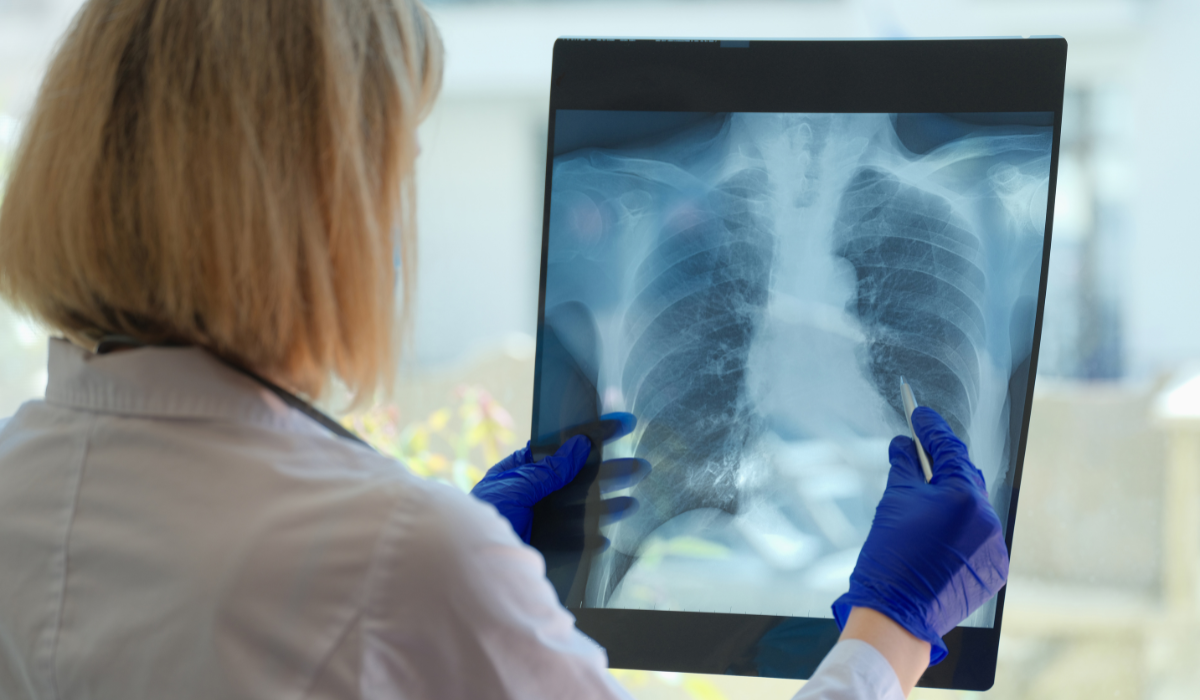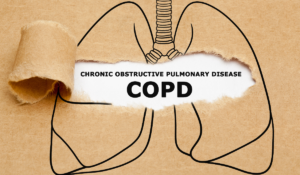Chronic Obstructive Pulmonary Disease (COPD) is a significant occupational health concern, especially in workplaces with exposure to respiratory hazards.
In fact, in 2019, COPD was the third leading cause of death worldwide, accounting for approx. 3.23 million deaths that year.
In the U.S., West Virginia led the nation with the highest prevalence of COPD in 2017, with nearly 14% of adults resident in the state diagnosed with the disease. In contrast, only 3.4% of adults in Hawaii were diagnosed with COPD, the lowest in the nation.
Unfortunately, the causes of COPD can often be traced directly to a workplace. Chronic exposure to dusts, fumes, and toxic materials play a direct role in the development of the disease.
Let’s take a look at COPD, its causes in the workplace, and effective measures to prevent its occurrence.
Related Article: Key Steps for Seasonal Flu Prevention In the Workplace
Related Article: How to Protect Your Team from the Effects of Silica

Understanding COPD
COPD is a progressive lung disease that obstructs airflow, making it difficult to breathe. Currently, no cure exists for the disease. While certain treatments and exercises may help manage the symptoms, prevention remains the best option available.
Occupational exposure to particulate matter, fumes, and gases can contribute to the development and exacerbation of COPD.
Common symptoms include persistent cough, shortness of breath, and wheezing.
A 2020 survey revealed that 88% of individuals with COPD in the U.S. suffered from shortness of breath during everyday activities within the past month, while 70% suffered from fatigue.
Another survey found that 27% of those with COPD felt it was “not at all easy” to avoid COPD triggers, with only 1% saying it was “very easy”.
Common COPD triggers include changes in weather, pollen, stress, cleaning products, dust, mold, air pollution, and smoke.
Around half of all COPD-related deaths among adults have COPD as the underlying cause of death. However, heart disease and cancer are also underlying causes in many COPD-related deaths in the U.S.
While the most common cause of COPD is tobacco smoking, air pollution and genetics can also play a role.
Causes of COPD in the Workplace
1. Inhalation of Harmful Substances
Because airborne particulates cause the majority of COPD cases, it’s no surprise that workers exposed to dust, chemicals, and fumes remain at a higher risk of developing COPD.
Industries such as construction, mining, and manufacturing often involve the release of airborne particles and irritants which can damage the respiratory system over time.
Employers operating in these sectors need to take extra precautions to ensure their workers remain healthy.
2. Poor Ventilation
Inadequate ventilation in workplaces can lead to the accumulation of pollutants, exacerbating respiratory issues.
Proper ventilation systems remain crucial to maintaining healthy indoor air quality, and reducing the risk of COPD in the workplace.
3. Exposure to Respirable Crystalline Silica
Certain occupations involve exposure to respirable crystalline silica, such as in construction and mining.
Unfortunately, prolonged exposure to this substance has been linked to an increased risk of COPD, as well as numerous other lung diseases.
While silica dust remains an unavoidable aspect of many jobsites, you can and must prevent your team from breathing it in.
Implementing measures to minimize silica exposure remains vital in preventing respiratory health issues. And, it’s why OSHA places strict limits & requirements regarding silica exposure.
COPD Workplace Prevention Measures
1. Risk Assessment and Monitoring
Conducting regular risk assessments to identify potential respiratory hazards in the workplace is paramount. Monitoring air quality and employee health can help in early detection and prevention of COPD.
2. Education and Training
A little education can go a long way. Provide your team with comprehensive education and training programs regarding respiratory hazards and preventive measures.
Workers should know the risks associated with their jobs and the proper use of the PPE needed to operate safely.
Proper Ventilation Systems
Investing in effective ventilation systems remains an essential aspect of maintaining good indoor air quality.
Ensure that workspaces remain adequately ventilated to reduce the concentration of harmful substances, minimizing the risk of COPD in the workplace.
Use of Personal Protective Equipment (PPE)
Encouraging the consistent use of appropriate PPE, such as- masks and respirators, can significantly reduce the inhalation of harmful particles.
To that end, make sure you have the right respirators for the job, and conduct fit-testing annually, at a minimum. Remember: it’s an OSHA requirement to fit-test annually.
Smoking Cessation Programs
Smoking remains a major risk factor for COPD. Implementing smoking cessation programs in the workplace can contribute to a healthier workforce.
As an employer, offering resources and support to help employees quit smoking can not only help reduce COPD in the workplace, but provide a vast number of other health improvements, too.
Regular Health Check-ups
Establishing regular health check-ups for workers, especially those exposed to respiratory hazards, allows for early detection of potential issues.
Timely intervention can prevent the progression of respiratory conditions like COPD.
COPD is diagnosed using a simple breathing test called spirometry.
To lower risk of other respiratory infections on your worksite, encourage workers to get a yearly flu shot, pneumococcal vaccine, and a tetanus booster that includes protection from pertussis (whooping cough).
Bringing it Together
COPD is a serious occupational health issue requiring proactive measures to mitigate its impact. Employers play a huge role in creating a safe working environment by identifying and addressing respiratory hazards.
Through education, proper ventilation, PPE usage, and health monitoring, your jobsite can significantly reduce the incidence of COPD among your workforce. It takes a collective effort to ensure employees breathe easy, and enjoy a healthy & productive work life.
Remember, a healthy workforce is also a productive workforce. Prioritizing occupational respiratory health not only safeguards employees but also contributes to the overall success and sustainability of your business.
About Worksite Medical
In most cases, OSHA requires medical surveillance testing, and at no cost to employees.
Worksite Medical makes that program easier with mobile medical testing.
We conduct on-site respirator fit tests, as well as audiometric exams, pulmonary function tests and heavy metal lab work, right on your job site. We also keep accurate, easy-to-access medical records for your convenience. You’ll keep your employees at work, and stay ahead of OSHA inspections.




